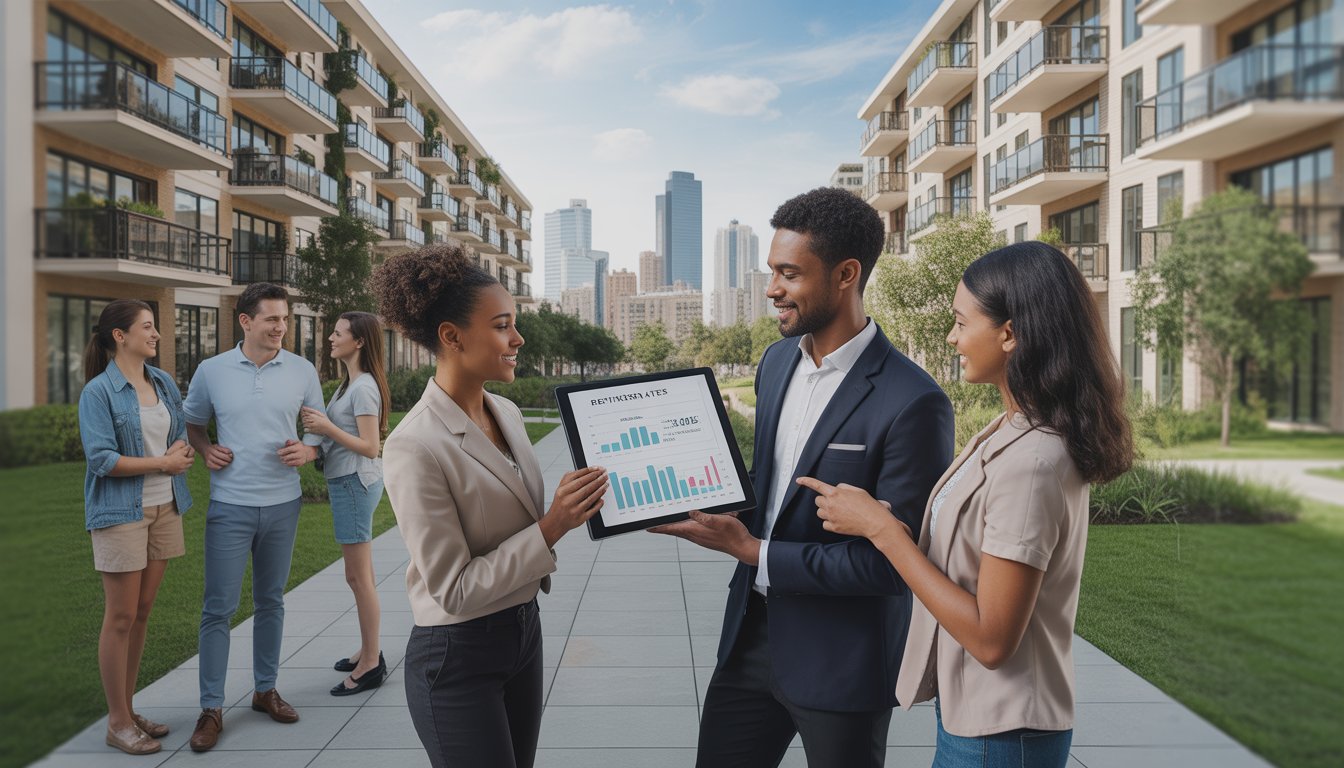Staying ahead of the curve is key to success in real estate investing. As an investor, you’re always on the lookout for innovative ways to maximize your returns and outshine the competition.
One innovation that has been steadily gaining traction in the real estate market is virtual staging. Virtual staging, a blend of technology and creativity, is transforming the way properties are presented and sold in today’s digitally-driven market. It’s particularly useful for remote real estate investments.
This powerful tool allows investors to showcase properties in their best light, without the need for physical furniture or decor. It’s like having an interior designer and a marketing team at your fingertips, ready to bring your property to life in the virtual world.
In this blog post, we’ll explore what virtual staging is, how it works, and why it’s becoming an essential tool for savvy real estate investors. You’ll discover the benefits of embracing this technology and how it can help you attract more potential buyers, sell properties faster, and ultimately, increase your potential return on investment.
What Is Virtual Staging?
Virtual staging is a powerful digital tool that allows real estate investors to present properties in their best light, without the need for physical furniture or decor. It utilizes advanced 3D rendering technology to create realistic images of furnished and decorated rooms, effectively showcasing a property’s potential.
At its core, virtual staging is about enhancing a property’s visual appeal to attract potential buyers or increase occupancy rates. It allows you to transform empty spaces into inviting homes, complete with stylish furniture, modern decor, and warm lighting—all done virtually.
Home Staging vs. Virtual Staging
Now, let’s compare this to traditional home staging. The conventional method involves physically bringing in furniture, decorations, and accessories to make a property more appealing.
While this approach can be effective, it comes with its own set of challenges. It’s time-consuming, labor-intensive, and costly. Plus, once the property is sold, you’re left with the task of removing all the staging items.
On the other hand, virtual staging eliminates these hassles.
With a few clicks, you can furnish an entire property, change the wall colors, add decor, and even manipulate lighting to create the perfect mood. And the best part? No heavy lifting or high costs involved.
In essence, virtual staging offers a more efficient, cost-effective, and flexible way to stage properties. It’s a modern solution designed to meet the needs of today’s digitally-driven real estate market.
So, as a forward-thinking investor, it’s worth considering virtual staging as a key tool in your real estate marketing strategy.
Why Virtual Staging Is Important for Real Estate Investors

Virtual staging plays a significant role in enhancing property appeal. An empty space can often seem cold and uninviting, making it hard for potential buyers to connect emotionally with the property. Virtual staging brings these spaces to life, showcasing them as warm, inviting homes that buyers can envision themselves living in.
By adding stylish furniture and modern decor, virtual staging highlights a property’s best features while also giving each room a purpose. This helps potential buyers understand the functionality of each space. For instance, an awkward corner can be staged as a cozy reading nook, helping buyers see the potential that they might have otherwise overlooked.
Moreover, virtual staging allows for versatility. You can cater to different tastes and preferences by creating multiple versions of the same space. For example, you can virtually stage a room as a home office for those working remotely, or as a playroom for families with children. This versatility broadens your reach, attracting a wider range of prospective buyers.
In addition to enhancing property appeal, virtual staging is a powerful marketing tool. In today’s digital age, most property searches begin online. High-quality, virtually staged photos can make your listings stand out on real estate websites, grabbing the attention of more potential buyers.
Furthermore, these visually appealing images can be shared across various digital platforms, including social media, email newsletters, and online advertisements. This expands your property’s visibility, reaching more prospective buyers and increasing the chances of a quicker sale.
How Virtual Staging Works
The process of virtual staging leverages technology to transform empty spaces into beautifully staged homes. Here’s a step-by-step rundown of how it works:
- Capture High-Quality Photos: The first step involves taking high-resolution photos of the property. These images provide the canvas on which the virtual staging will take place. It’s crucial that these photos are clear, well-lit, and capture each room from the best possible angle.
- Choose Your Design Style: Next, you’ll select a design style that suits the property and appeals to your target market. This could range from modern minimalist to rustic farmhouse, or anything in between. The aim is to create an inviting space that potential buyers can envision as their own.
- Furnish and Decorate: This is where the magic happens. Using advanced 3D rendering software, virtual staging professionals add furniture, decor, and lighting to your photos. They ensure each item fits naturally within the space, creating a realistic and appealing image of a furnished home.
- Review and Revise: Once the initial staging is done, you’ll get to review the images. If there are elements you’re not happy with, adjustments can be made. This could involve changing the color scheme, swapping out furniture, or altering the layout until you’re satisfied with the result.
- Use the Images: Now that you have your virtually staged photos, they can be used in your online listings, social media posts, email campaigns, and any other marketing materials.
Virtual staging relies heavily on sophisticated 3D rendering software to create lifelike images of furnished and decorated rooms. This technology allows for incredible detail and realism, making it hard for viewers to distinguish virtually staged photos from those of a physically staged property.
Moreover, virtual staging technology offers remarkable flexibility. It enables quick and easy changes to the design, allowing you to cater to different buyer preferences or update the staging to align with current interior design trends.
Benefits of Virtual Staging for Real Estate Investors

Virtual staging is gaining traction among real estate investors for good reason. It offers a plethora of benefits that go beyond just making properties look good. Here are some of the key advantages that virtual staging brings to the table:
- Cost-Efficiency: Traditional staging can be expensive, requiring investment in furniture, decor, and often a professional stager. Virtual staging, on the other hand, only requires a one-time fee for digital services, making it a more cost-effective option.
- Speed and Convenience: With virtual staging, you can have your property staged and ready to market within a matter of days. There’s no need to wait for furniture delivery, setup, or removal. Everything is done digitally, saving you time and effort.
- Versatility: Virtual staging allows you to tailor the design to different tastes and lifestyles. You can easily create multiple versions of the same room to appeal to various buyer demographics.
- Increased Property Appeal: By showcasing a property’s potential, virtual staging can make it more appealing to buyers. It helps them visualize how the space can be used, making it easier for them to connect emotionally with the property.
- Boost Online Presence: In today’s digital world, having an impressive online presence is crucial. High-quality, virtually staged photos can make your listings stand out, attracting more views and potentially leading to quicker sales.
- Reduced Time on Market: Properties that are staged—either physically or virtually—tend to sell faster than those that aren’t. By helping buyers envision the property as their future home, virtual staging can expedite the selling process.
Leveraging Virtual Staging for Real Estate Success
In this fast-paced digital era, real estate investors can no longer afford to ignore the power of virtual staging. It’s more than just a technological innovation. It’s a strategic tool that can significantly enhance your property’s appeal and marketability.
Throughout this post, we’ve explored the ins and outs of virtual staging and its undeniable importance in today’s real estate market. We’ve seen how it offers not only cost-effectiveness and convenience but also a competitive edge in attracting potential buyers.
Remember, virtual staging is not about creating an illusion. It’s about presenting a vision—a vision of what could be. It allows potential buyers to visualize a property’s potential and see it as their future home.
And for real estate investors, this powerful visual persuasion translates into quicker sales and potentially higher returns on investment.

Are you looking to master your rental property management?
Get your copy of Achieving Financial Success as a Property Manager: An Insider’s Guide today and become an expert in managing rental properties.
This comprehensive guide provides all the strategies and information necessary to succeed in this exciting industry, so don’t miss out – get your copy now from your favorite bookseller:
- Amazon
- Books2Read for Apple, Barnes & Noble, Kobo, Scribed, and 8 more sellers with both eBook and paperback options available
- Payhip as a PDF
You can also:
- Visit our learning center
- Learn more about our consulting services
Content created by J. Scott Digital freelance copywriting services.



